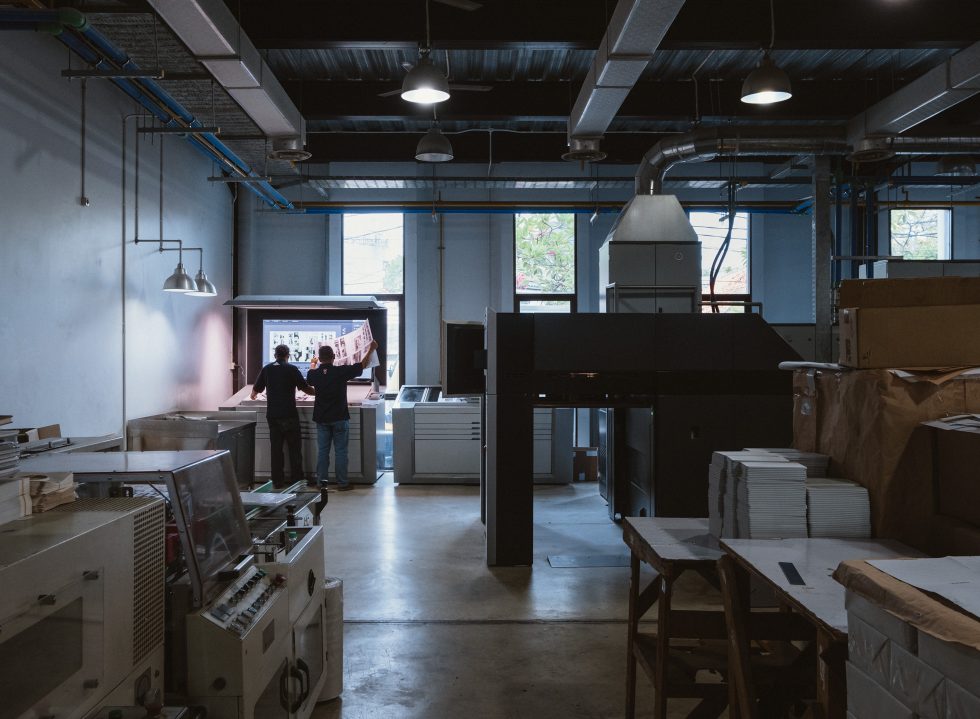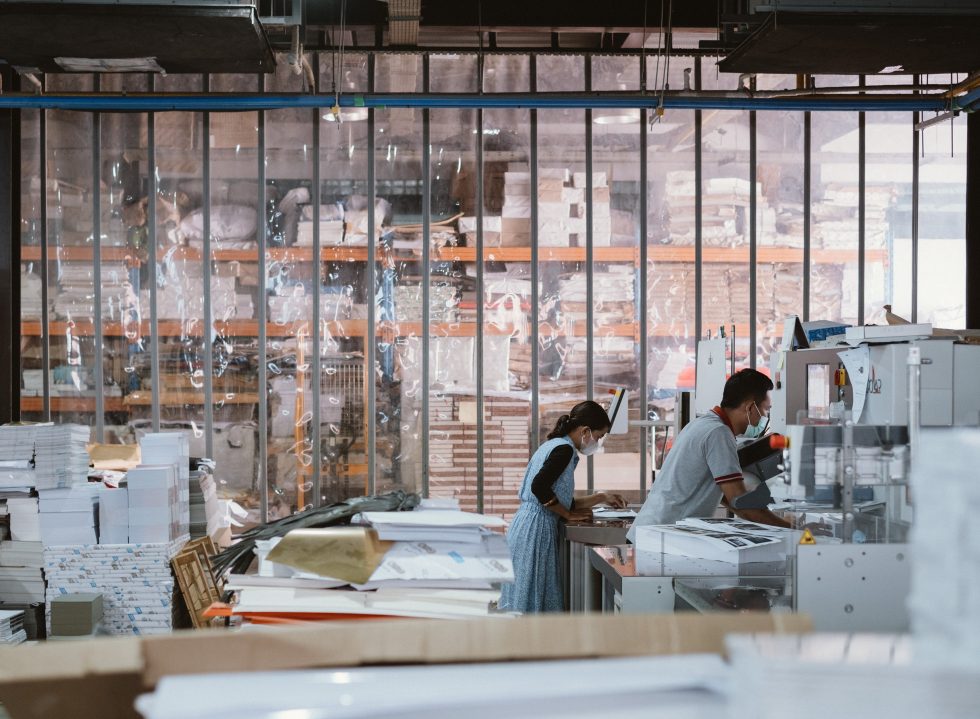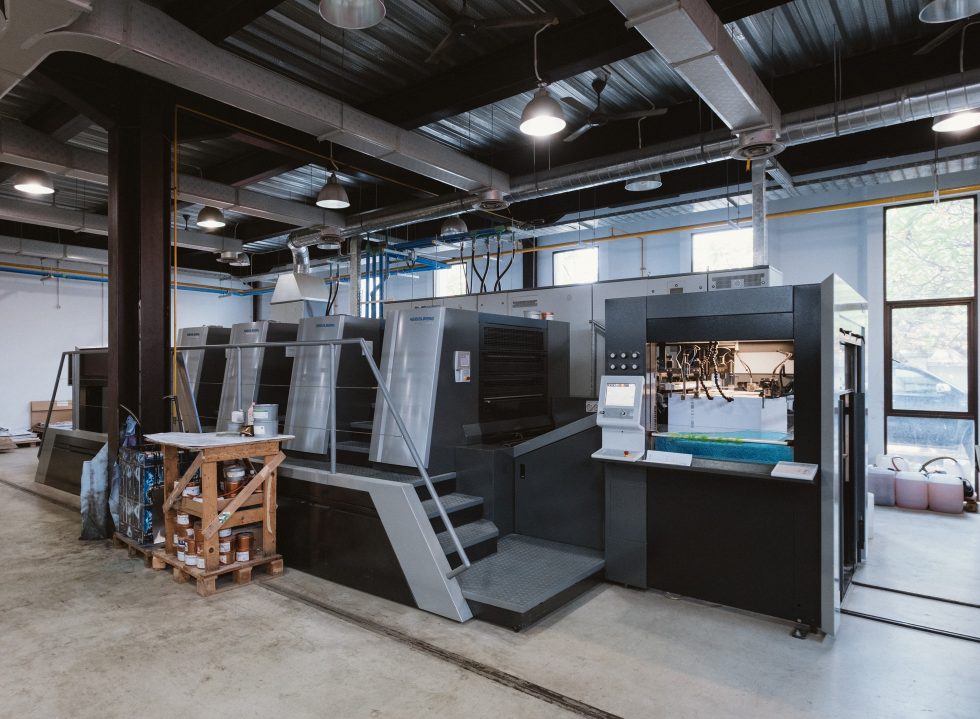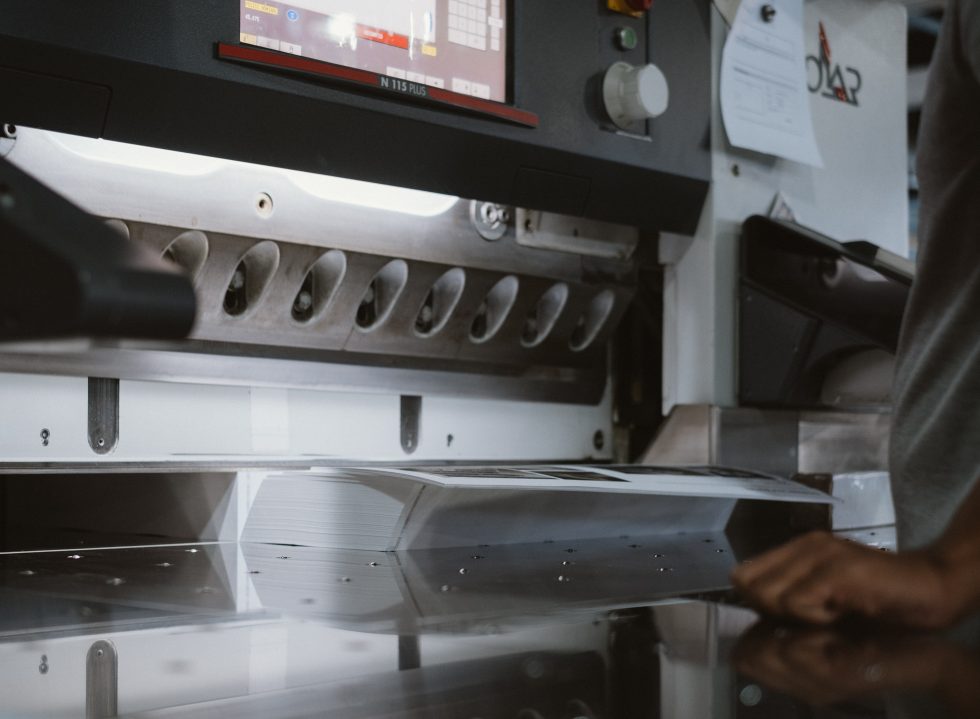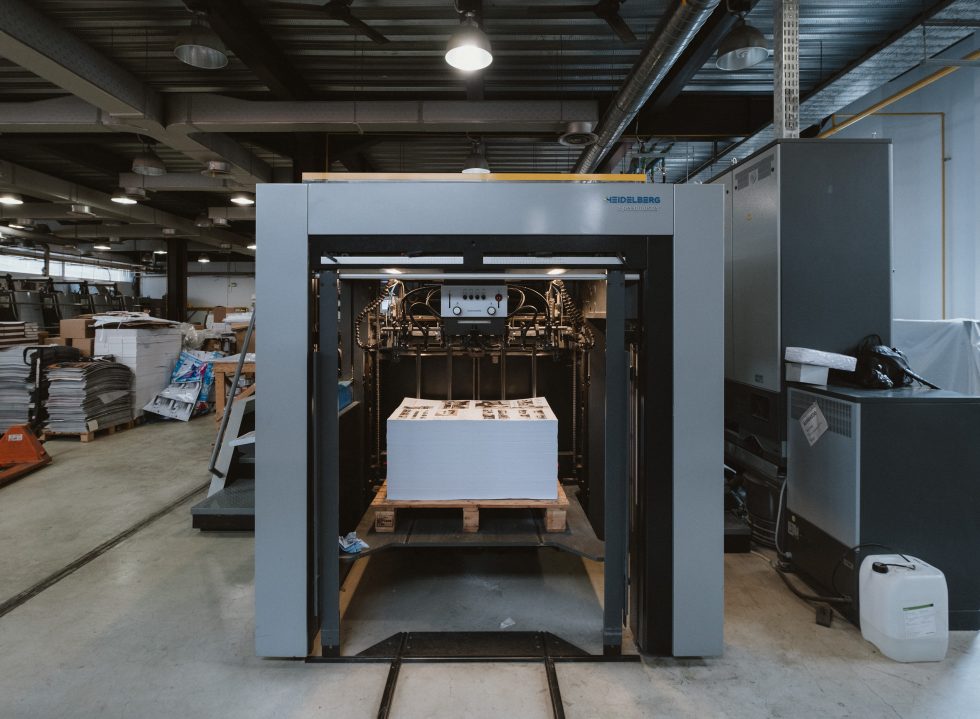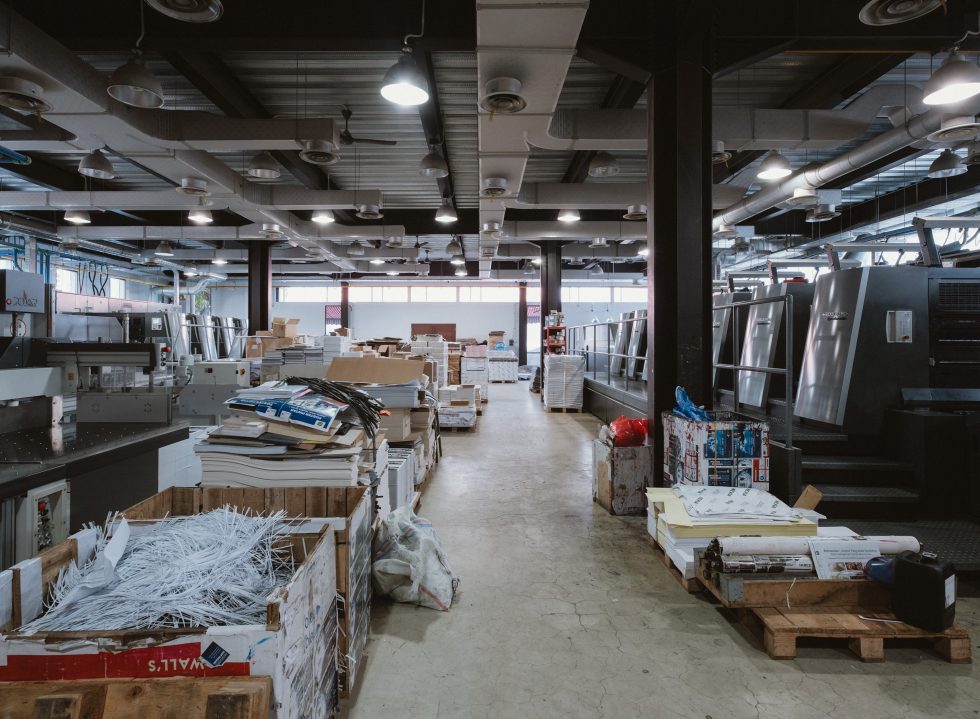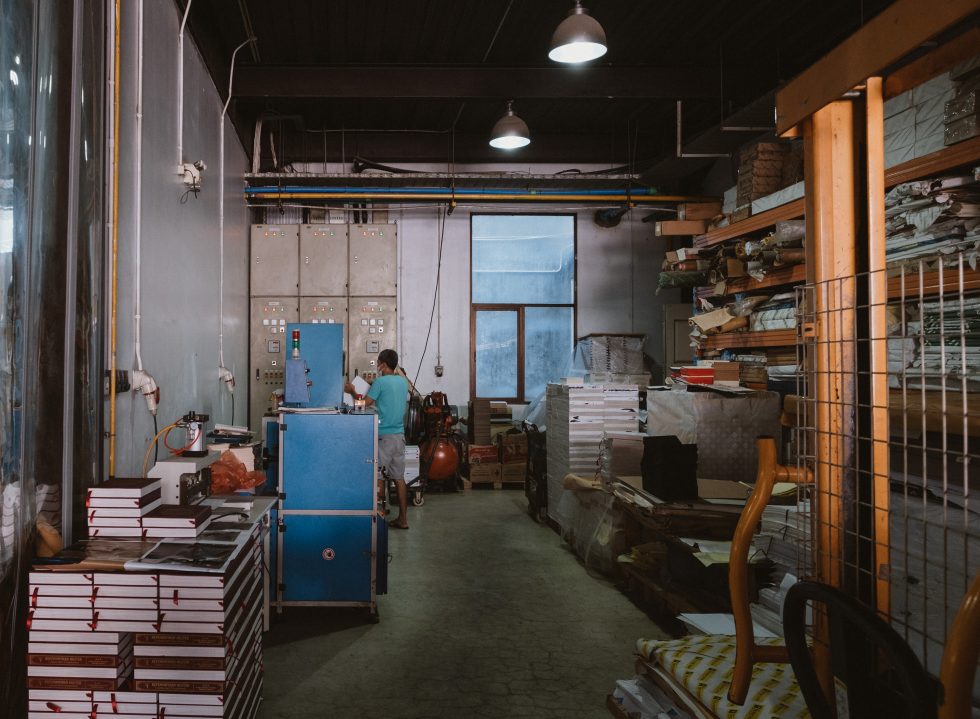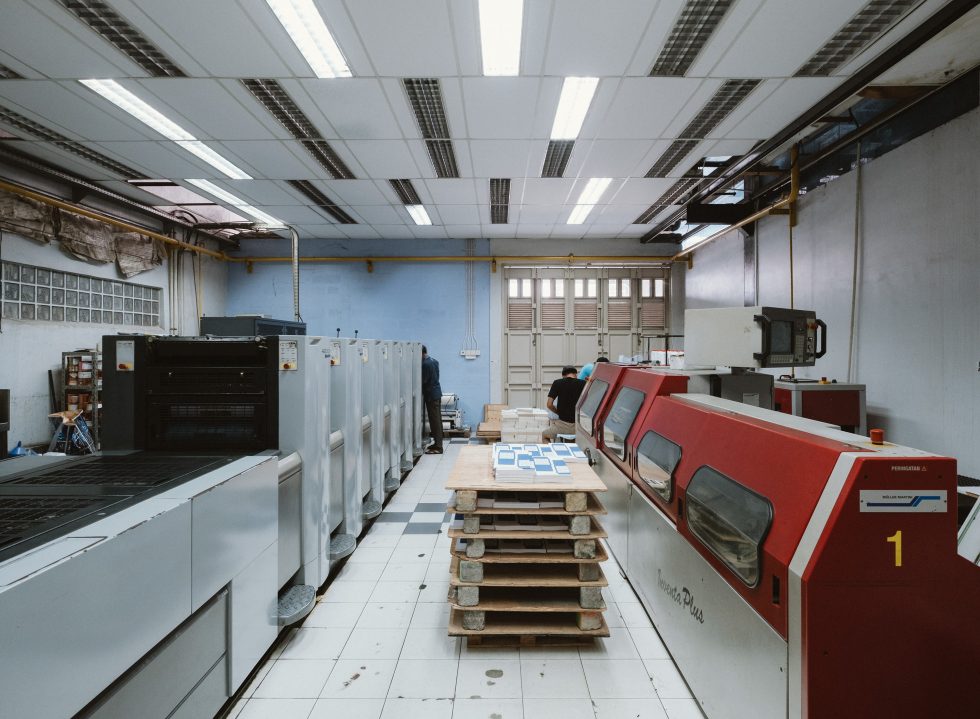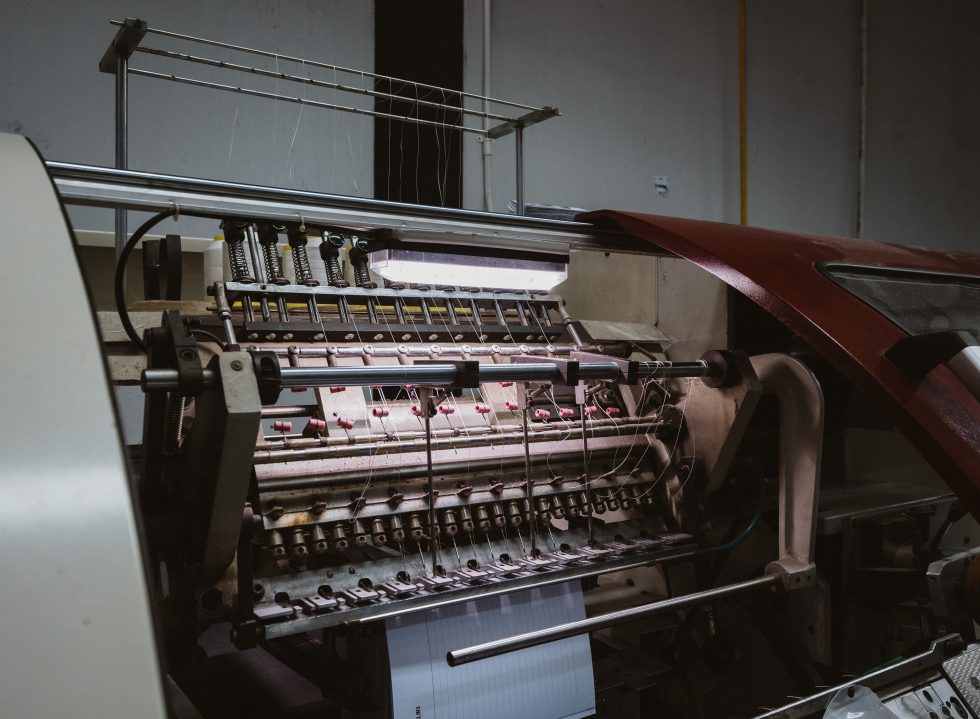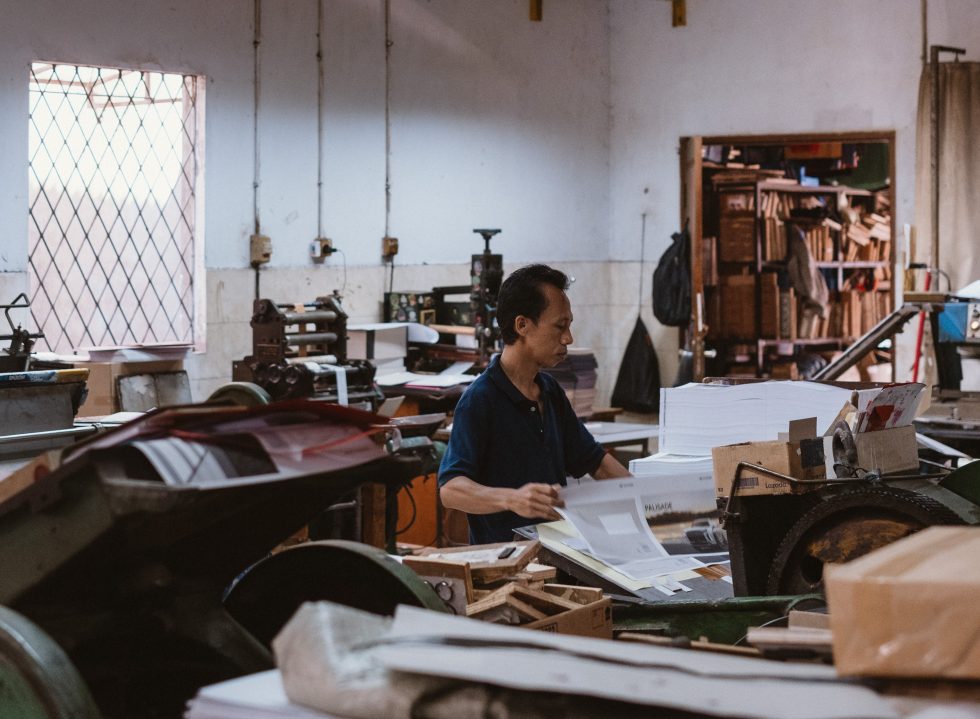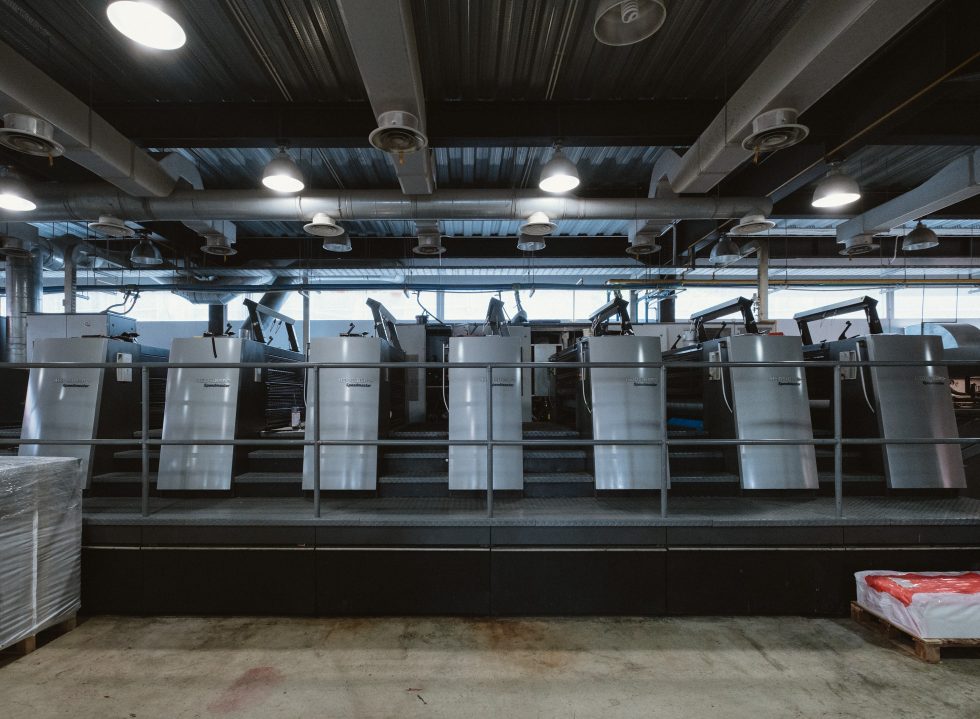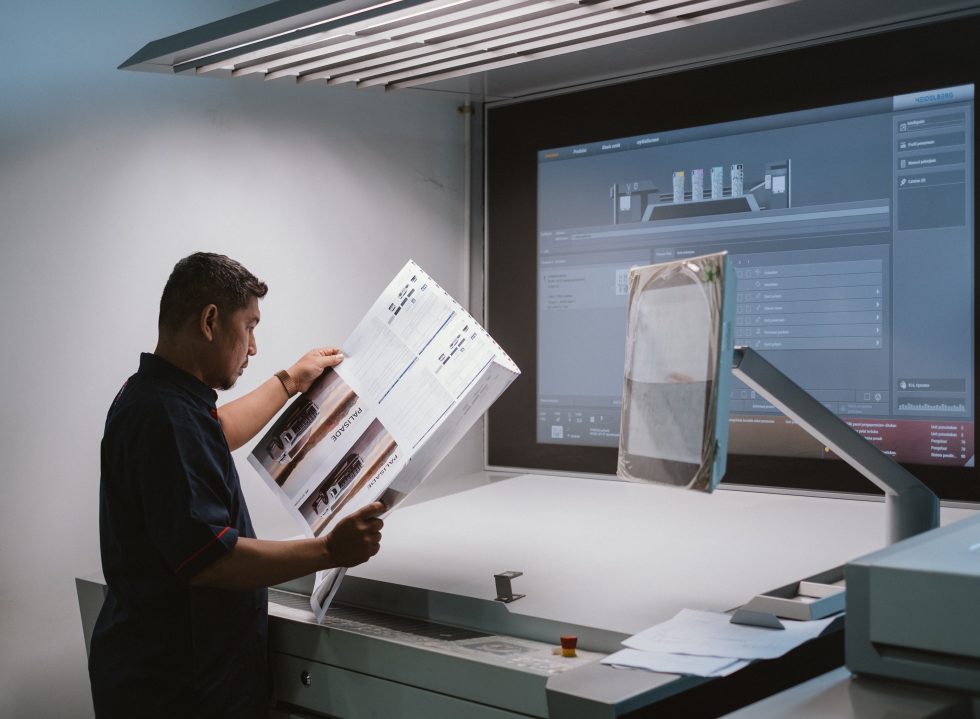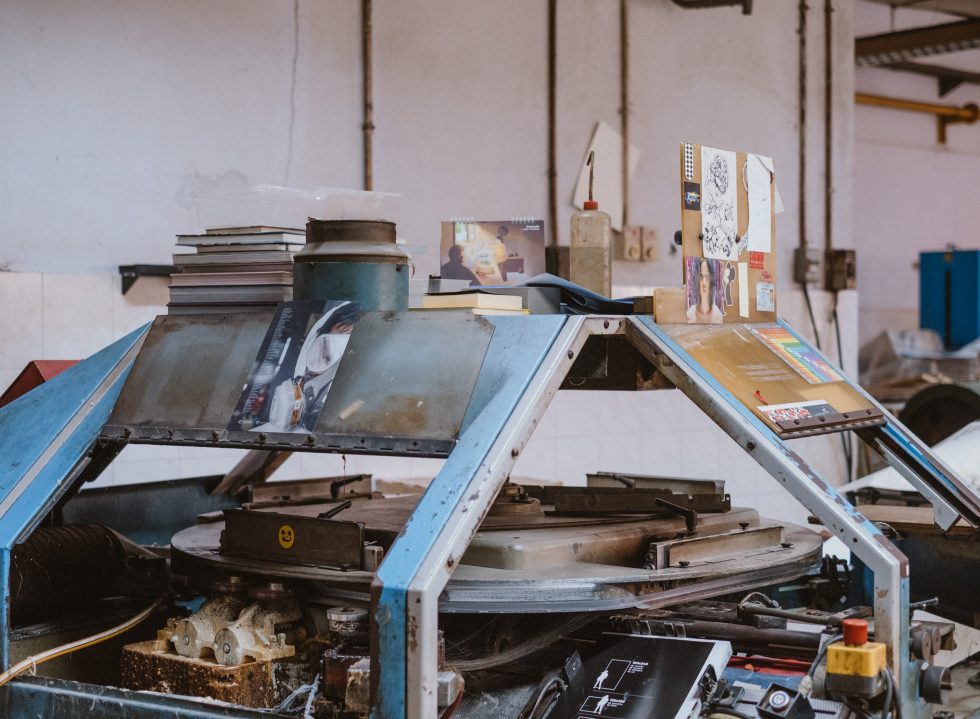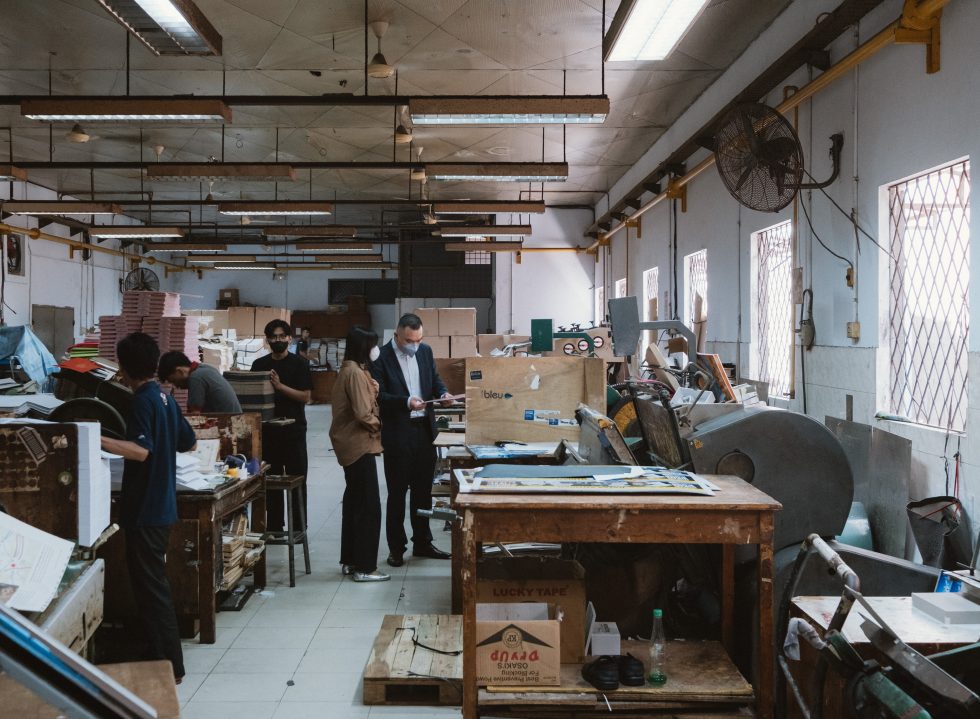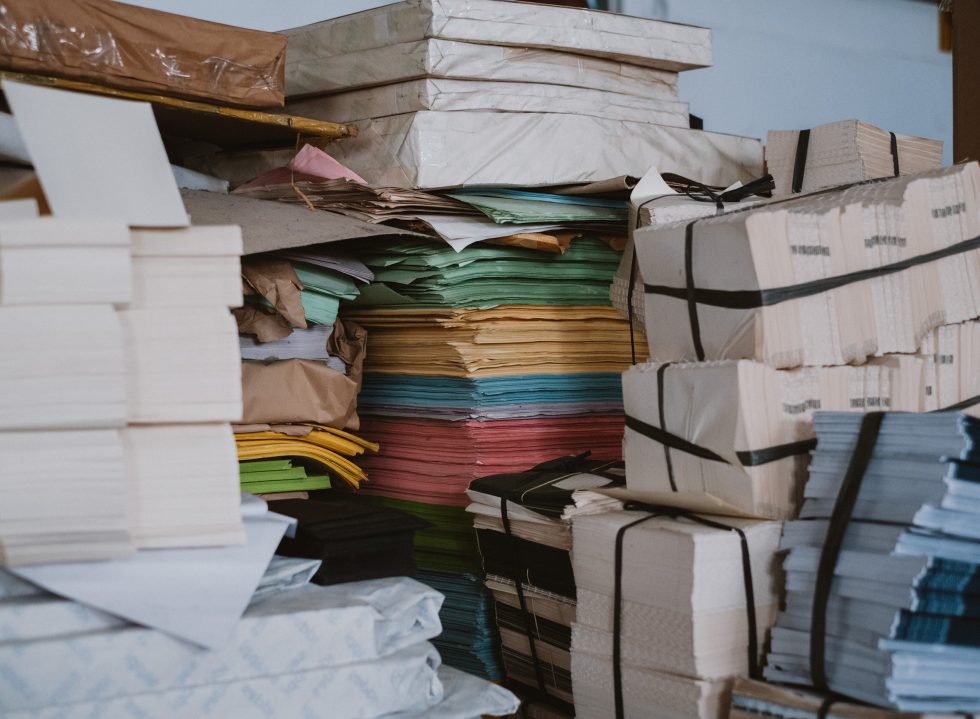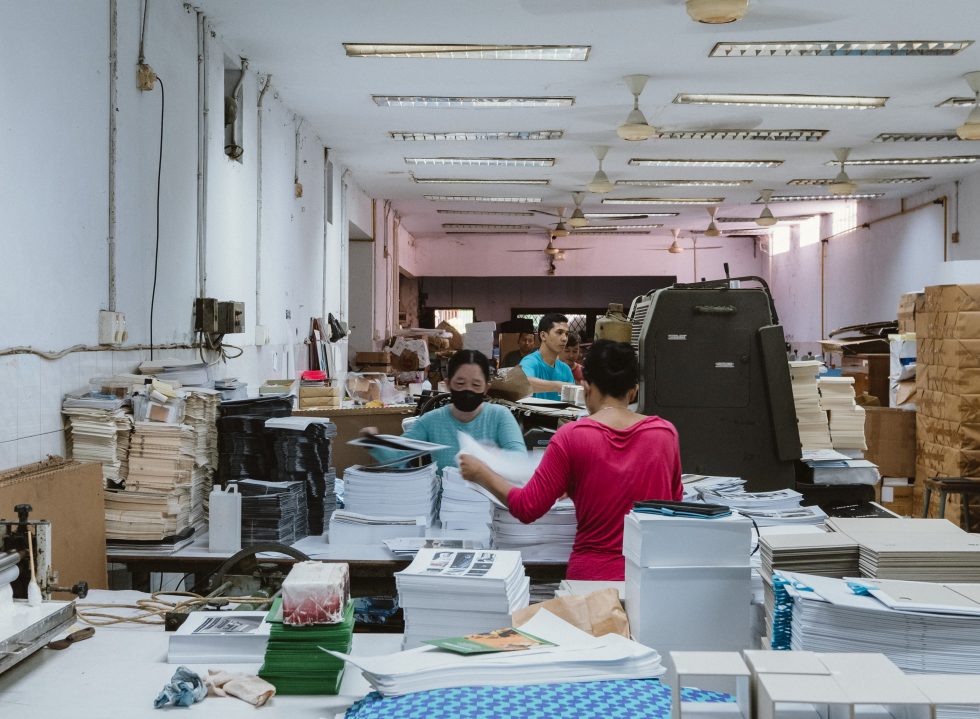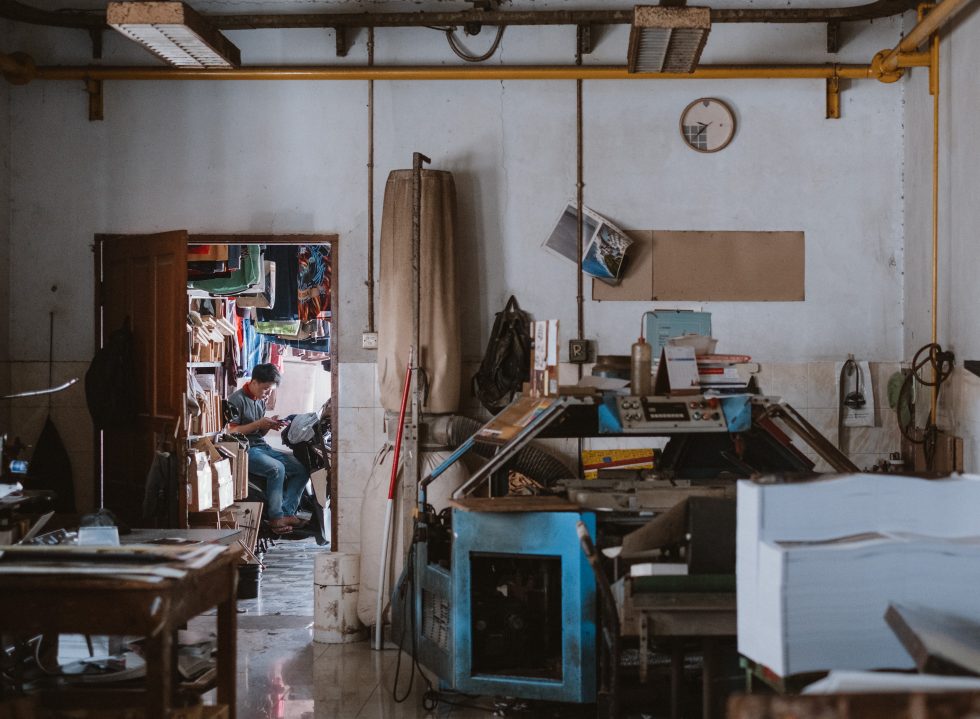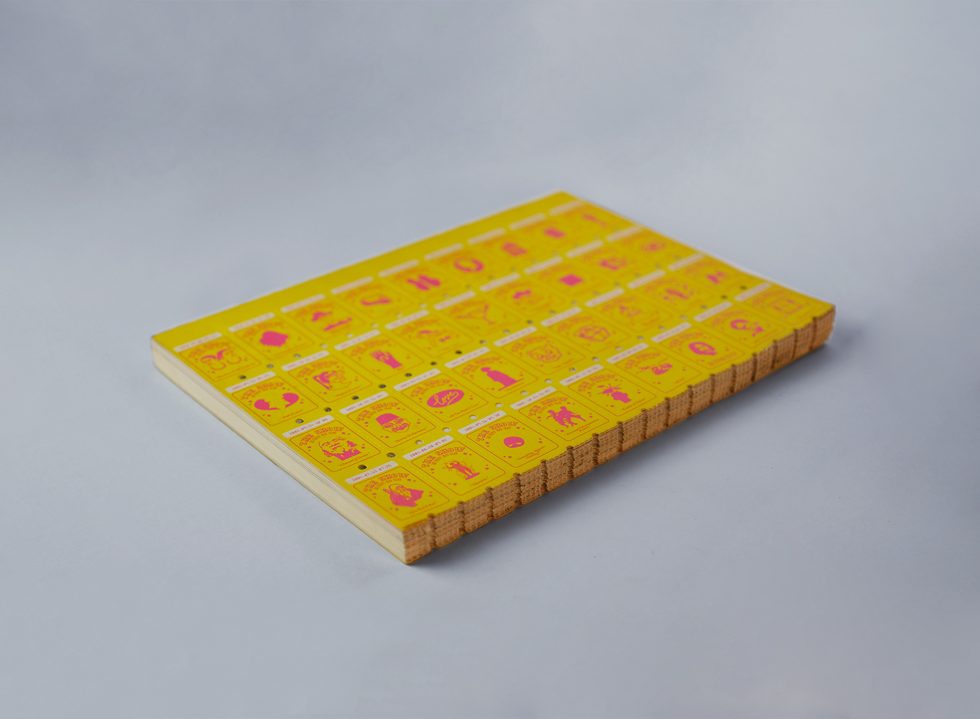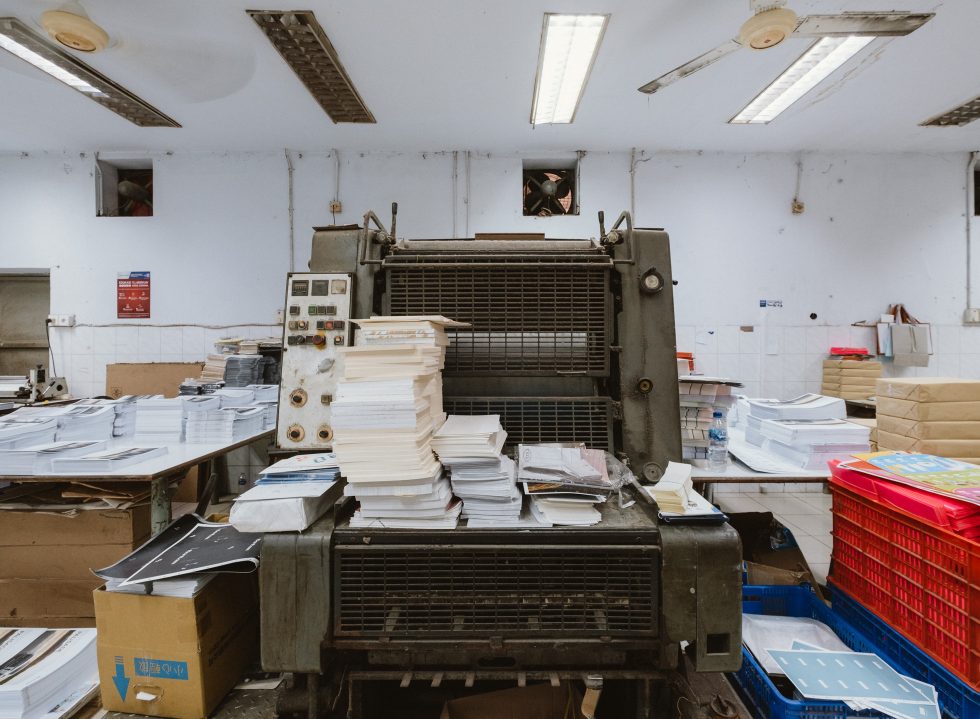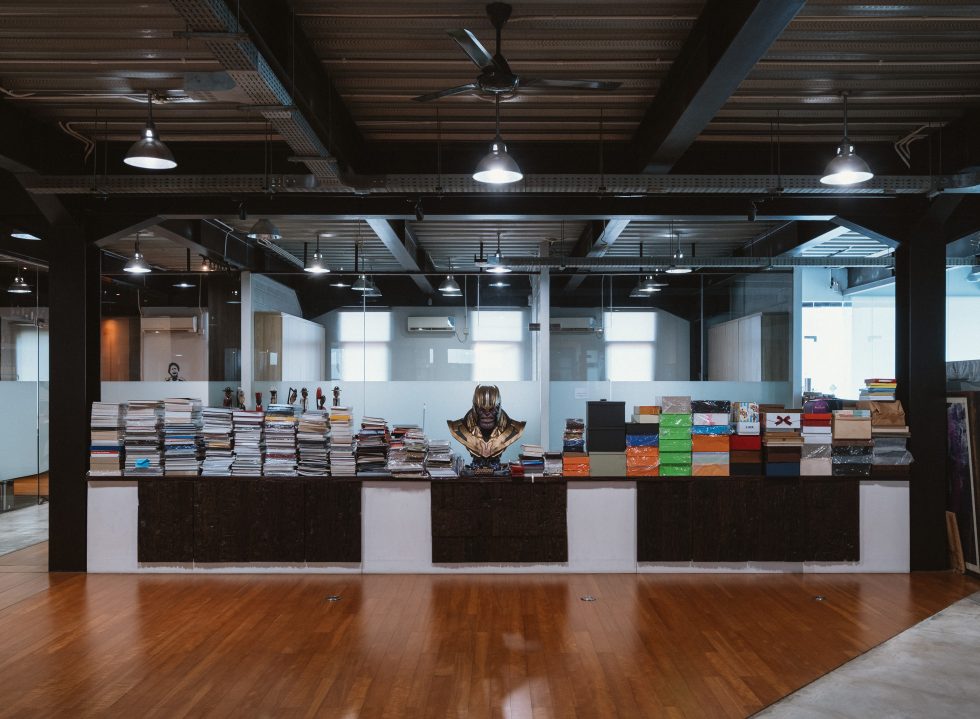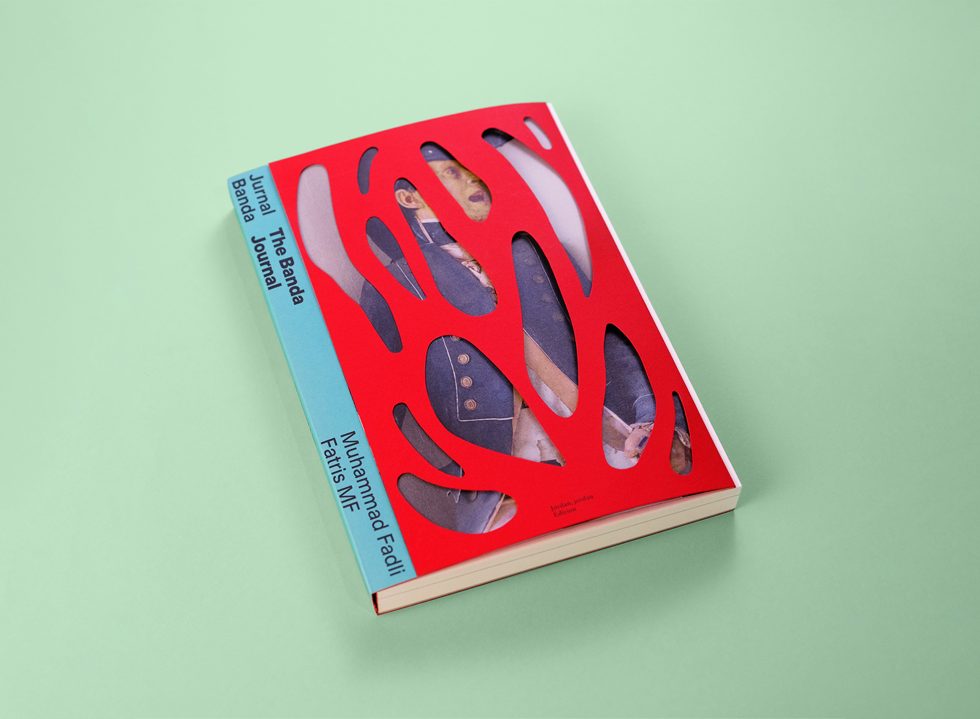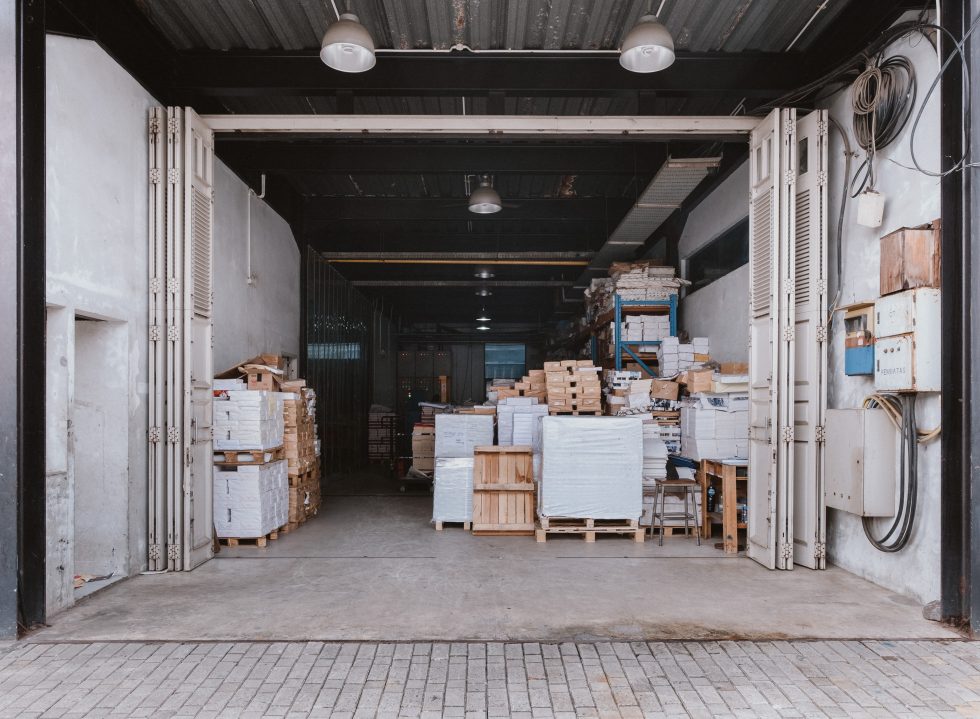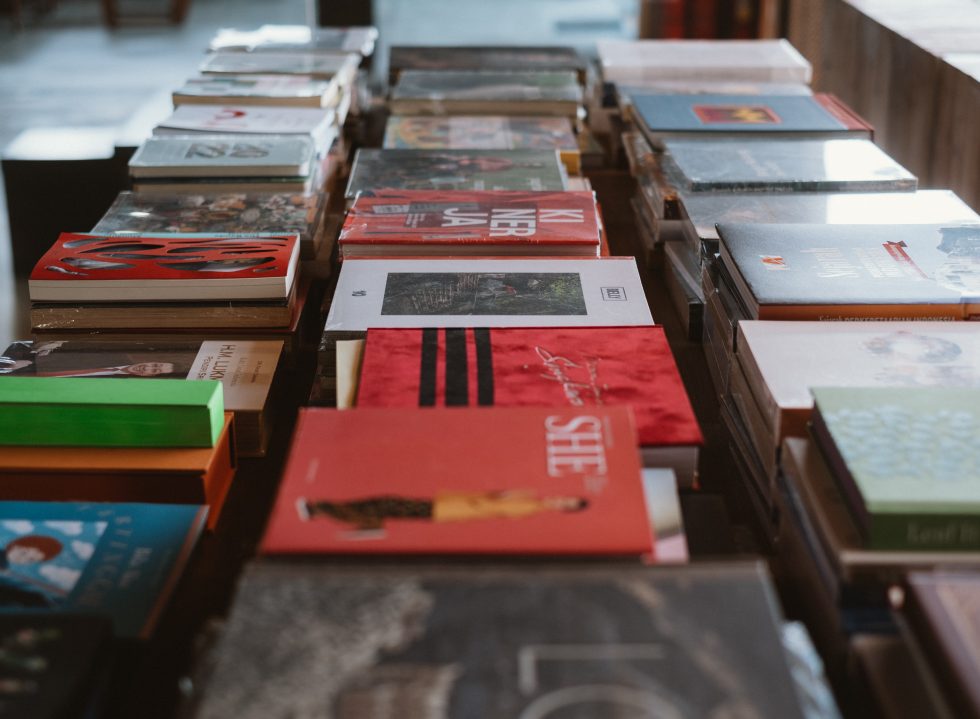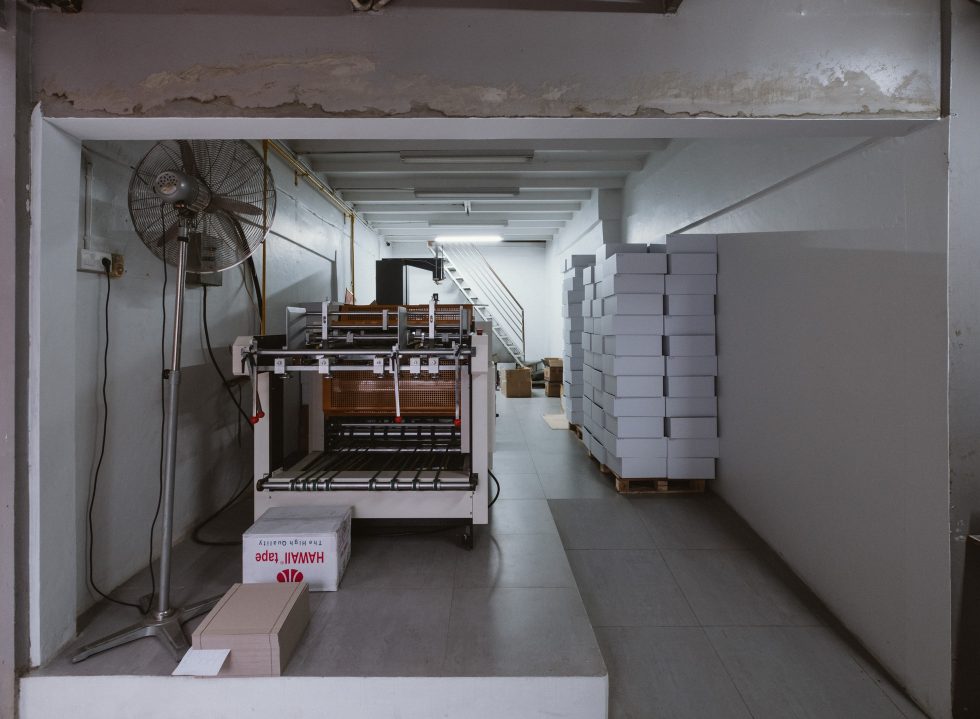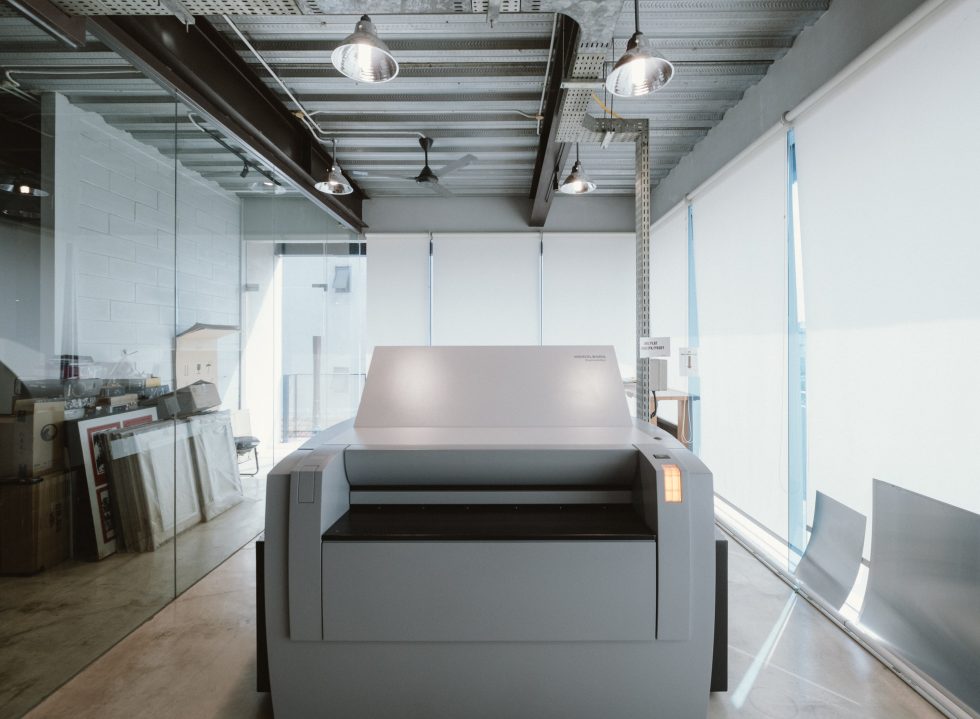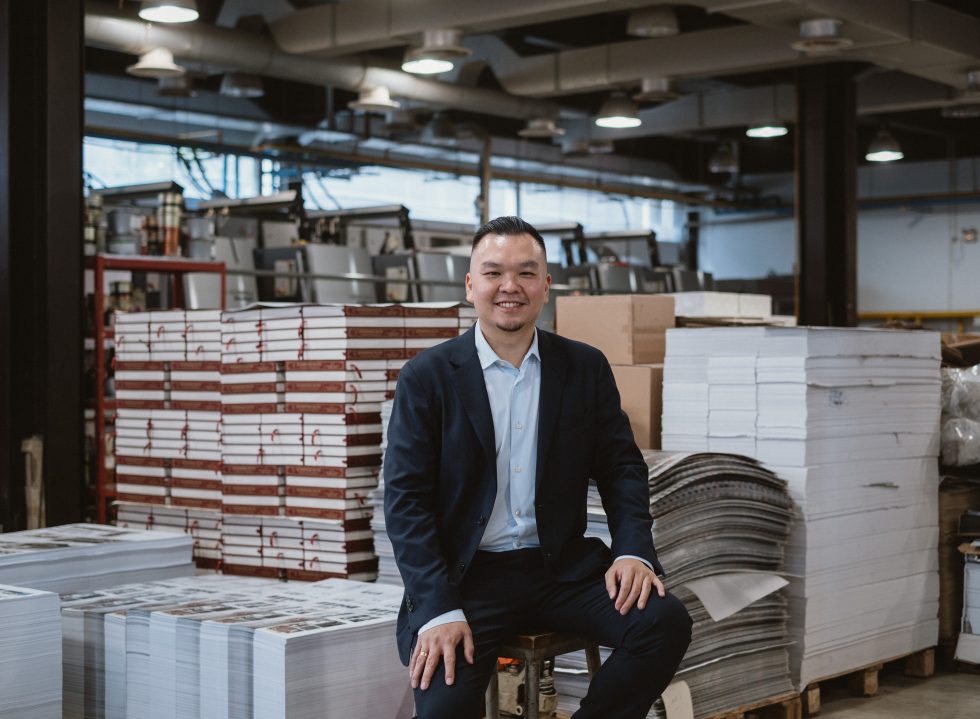On a Friday morning at Harapan Prima’s printing factory in Central Jakarta, staff in uniform can be seen settling near their assigned machines: the printing towers to monitor the day’s large volume prints, the press control systems to adjust ink density before materials go through the press. Situated on the building’s ground floor that mimics a very large garage, this is where most production, from printing and binding to any kind of handwork, happens.
On the second floor, other employees were seated in front of computers, tasked to oversee the digital files so they can transfer images and text onto metal plates before they go through the rollers where inks and water are applied.
On that day, they were printing an art book for a client in Bali whilst doing the finishing touches on other materials; spotted were stacks of car brochures, embossed name cards, and the hot pink invitation envelopes for the recently-held Art Jakarta 2022 exhibition—a simple overview of the type of print work entrusted to Harapan Prima.
It’s been over 30 years since the offset printing company began its journey in a one-room production space at the same location. Founded by Djoni Heng who hailed from Medan, it has now expanded to an expansive building and is home to 70-plus staff, award-winning works and high-performing printing machines that once could only be found in their Kebon Kosong factory.
“We were the first one in South Asia to own the Heidelberg Speedmaster XL105+6-UV printing machine. We ordered it in 2008 and it arrived the following year. For a while, our office turned into a showroom as some people wanted to check it out,” laughed Managing Director Howard Brawidjaya.
It was a big spending, one that may have raised some eyebrows, but Howard saw it differently. “We always believe that we have to upgrade our machines, whether it’s needed or not, whether the market for this specific type of printing is there or not. We see it as a way for us to experiment and keep learning to produce better results.”
Inside Harapan Prima, we watched how things get made—a rare look into a streamlined yet comprehensive process that requires its own precision, a great eye for detail and strong instinct. It also looks into the company’s depth of experience brought by the accumulation of time and unflinching mindset, a nodded explanation as to why they’ve become one of the most established and respected printing companies in the city.
The ‘no penny’ pitch
“Why printing? There were so many other businesses that are simpler and require less technical understanding,” wondered Howard of his father’s decision to start a printing business back in the 80s.
It started when Djoni moved to Jakarta from Medan and was staying with his cousin, who at the time was already running a printing business. Intrigued by what he saw and the new things he learned every day, Djoni started to plunge into the craft seriously, eventually setting up his own business in 1987.
As a novice trying to break through suppliers and new customers, he dared to put out an almost daredevil pitch to appeal to them. Hotels were amongst his first clients, where he was tasked to print their stationery items. Howard recalled, “My dad used to pitch to them ‘If we produce lower quality printing than your existing stationery, then you don’t have to pay us.’“
This bold approach, in a way, solidified his mindset and work ethic to always bring out the best quality in his work—a principle that carries on until today. This manifested through the things the company puts their money and energy into, from continuously updating their printing machines and equipment to training their employees through workshops.
Working in deep with clients is also a big part of the creative workflow that happens at Harapan Prima. “We always brainstorm with them one or two months prior to the actual production,” said Howard, who majored in graphic design at ArtCenter College of Design in Pasadena. “This is a very important step in our process because we treat every work, big or small, as ours. Our works are also created with the mindset that they should be worthy of awards.”
A creative synergy
Harapan Prima has always been on the artsy side, and this is probably where they shine the most. Notable for producing a lot of photography books and exhibition booklets to packaging boxes with intricate designs, it’s no wonder that photographers, artists and graphic designers dominate their client list.
No stranger to unconventional materials, they’ve worked with wallpapers and textiles to synthetic grass as they grace book pages, jacket covers and packaging boxes, and they’ve done this even before it was common. Today, it’s printed easily with their existing, savvy machines, but back in the 90s, they went to lengths by ‘forcing’ the machines they had at the time to print them.
“I always kid with our clients, ‘Why do you always bring us difficult work to print?’. It’s always a case of problem-solving of how to print this, what kind of ink goes with this—which I’m grateful for,” said Howard with a hint of pride. “But the running joke is that easy work doesn’t fall on us. It’s always the challenging ones.”
Henricus Linggawidjaja, the founder of design studio Artnivora, has known Harapan Prima since 2006. Their first project together was a book about Indonesian painter Anton Huang and his collection of works. “Since then, I’ve trusted Harapan Prima with all of our creative printing, including books for Agus Suwage, Eko Nugroho to Hotel Mulia, and many more,” said Henricus.
For one of the studio’s recent works, an exhibition booklet The Show Must Go On for Nadi’s Gallery, he and the team had produced a rather peculiar design for the jacket cover. “You know those tickets that you get from arcade machines? They wanted to incorporate that for the cover. The idea was so that we can rip the ticket for customer experience,” explained Howard. “This required not only printing but handwork as well. It was quite an experiment for us. But we were excited because it wasn’t a run-of-the-mill experience.”
Another standout in Harapan Prima’s portfolio is the 2021 photobook The Banda Journal by Muhammad Fadli and Fatris MF. Spread across the 240 pages are visuals and text that narrate present-day Banda, a gripping content about post-colonialism where the islands were once subject to exploitation for nutmeg. The journal earned multiple international recognitions, notably winning the 2021 Photobook of The Year from the Paris Photo-Aperture PhotoBook Awards.
Publisher Jordan Marzuki of Jordan, jordan Èdition, who has known of Harapan Prima since his college days, recounted the process of bringing this book to life. “We wanted to step away from the conventional photobooks—hardcovers, expensive materials. The team understood this, from providing us with references and solutions down to the last-minute changes,” disclosed Jordan. “I think this is very important because we know most of the time, printing is not a smooth process.”
Printed during the pandemic, Jordan also noted that one of the hiccups was accessing the desired Italian paper which was scarce in supply at the time. “Howard gave us recommendations of cheaper options,” recounted Jordan, pointing to the red paper that is now used as the journal’s cover, which was designed to resemble a nutmeg mace.
“It’s not the same quality, but it somehow gave us a better experience because we didn’t want to portray a sense of luxury when the theme of the book reflects the opposite. It made sense in the end, so it was quite fortunate that things happened this way.”
What’s at stake for print?
When the pandemic hit back in 2020, inevitable impacts reverberated across industries. For printing companies like Harapan Prima, it came through postponed projects, fewer working hours and rising production costs.
“It was quite a rollercoaster ride. There was one moment where we were overwhelmed with outputs, and when cases spiked, the pace slowed down again,” recalled Howard. “But we’re grateful that we still have projects in line without having to let go of our employees.”
In retrospect, impacts like these also sound off to a bigger picture in regard to print and the industry. With the declining circulation of newspapers and magazines and the strong leaning towards digital, it’s no secret that the demands for print have lessened. “What I’ve observed is that we’ve been printing more titles, but in less quantity. Say, if we used to print 5000 to 10,000 copies for one book, now we print only 500 or 1000,” noted Howard.
Yet amidst this shifting tide, he leads the company with a cool-headed mind, preferring to plunge into curiosity about how they can produce better results while placing his faith in the unabating role of print.
“For me, print is still here to stay because we are seeing a change in its function. If books were once used to spread information, now it’s evolved into something that has more personal and emotional value,” said Howard. “A print material is now used as a way to leave a social statement or legacy, not to mention, the tactile value it brings to the experience. If you look at art books, it’s not merely a book, it’s art in itself.”
